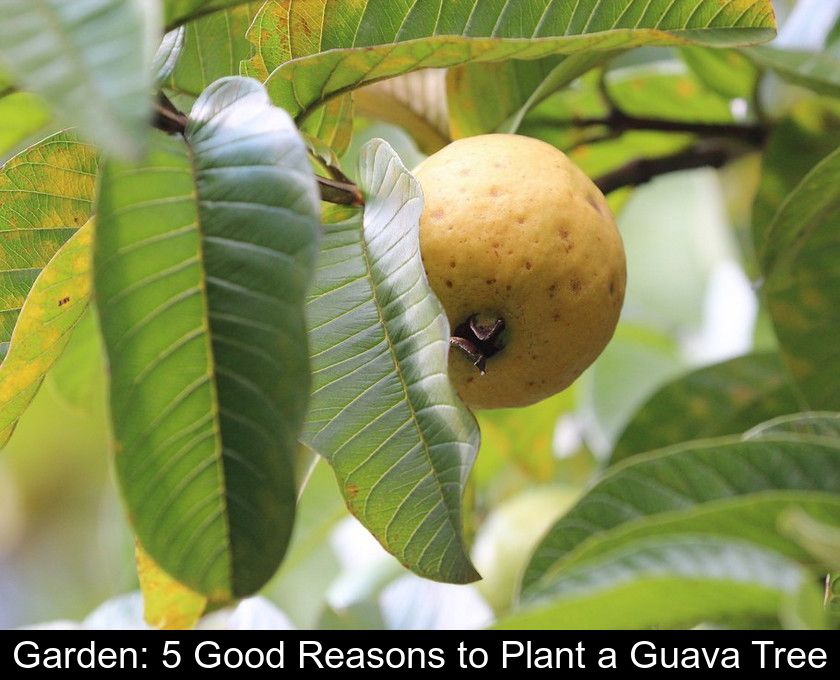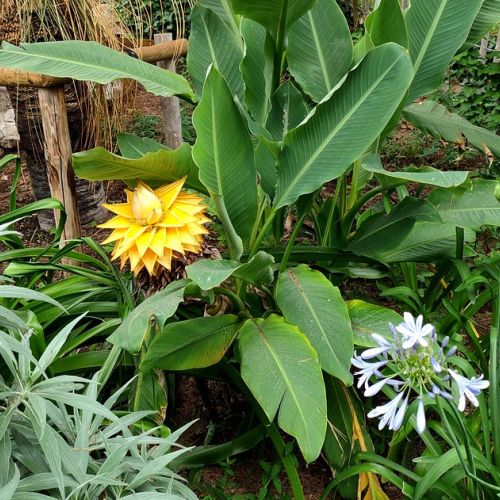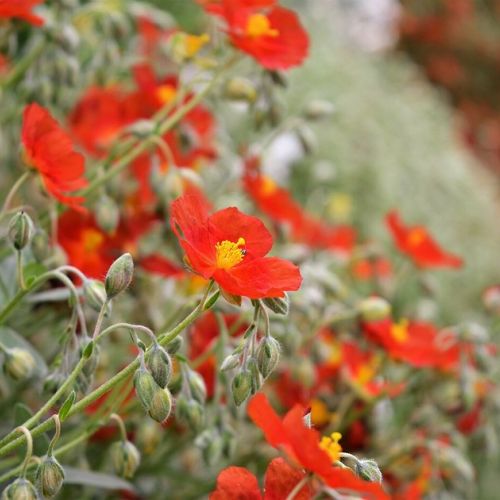Garden: 5 Good Reasons To Plant A Guava Tree
Tropical tree native to Latin America, the guava is cultivated for its green fruits with granular and highly fragrant flesh. But did you know that it is possible to grow this original fruit tree in certain regions of France? If you live in an area with mild winters, you can try growing it in the ground. We are going to give you 5 good reasons to plant a guava tree in your garden.
It's an original fruit tree.
More original than an orange tree or an apple tree, the guava tree is a beautiful tropical tree from the Myrtaceae family. This tree, whose botanical name is Psidium guajava, is also known as sand plum or apple guava for its edible fruits.
In tropical areas, this tree can reach up to 10 meters in height. It has a persistent foliage of a beautiful dark green. With its erect and bushy bearing and its large green leaves, this fruit tree will give an exotic look to your garden.
Its flowers and bark are highly decorative.
Not only does it produce delicious fruits that are rich in vitamin C, the guava is also an ornamental tree.
In spring, it is covered with delicate white flowers with long pale yellow stamens. These pretty fragrant flowers delight pollinating insects and are not the only part of the tree that is particularly aesthetic...
The Psidium guajava also has a remarkable bark. This peeling bark reveals multiple colors, adding to the decorative appeal of the tree.
Its cultivation is easier than it seems.
Even though the guava tree is sensitive to cold, it is possible to grow it in all regions of Metropolitan France. In the South of France and in the milder regions of the Atlantic coast, you can try planting it directly in the ground.
Elsewhere, you will simply need to grow it in a pot so that you can protect it from the cold during winter. This tropical tree is not hardy and can tolerate cold down to -1°C for very short periods.
In the garden, you should place it in a sunny spot sheltered from prevailing winds. Wait until all risk of frost has passed before planting. If your region experiences freezing temperatures in winter, it's better to grow it in a large container so that you can overwinter it in a greenhouse or a conservatory.
Regarding the soil, this fruit tree is very adaptable and accepts stony or sandy soils. For pot cultivation, you can use a citrus potting mix blended with a bit of compost. You just need to make sure to put a good layer of clay pebbles at the bottom of the pot to ensure proper drainage.
This tree, native to Peru, has spread throughout South America and then to all tropical countries. Today, it is considered an invasive species in many countries because it spreads quickly and tends to smother local vegetation.
Even under our latitudes, the guava tree produces fruit.
If you enjoy the taste of guava which slightly resembles the flavor of peach and strawberry, know that even in our climates, a guava tree can bear fruit for you. Fresh guava is a low-calorie fruit but rich in vitamins and minerals.
The Psidium guajava produces round or pear-shaped fruits. Their flesh can be pink, white, yellow, or reddish depending on the variety. In fact, there are more than 150 varieties of guava trees around the world. In any case, their fruits are edible, rich in vitamin C, and their juice can be used to make delicious cocktails!
Initially green, the fruits turn yellow when ripe: this is the sign that they are ready to be picked. The harvest usually takes place at the end of summer and in the fall. You can consume the fruits as they are or use them to make juices, fruit pastes, and jams with a delightfully exotic flavor.
Note: In summer, this tree should be watered regularly to keep the soil always moist. However, once the fruits reach maturity, it is advisable to reduce watering to a minimum to make them even sweeter.
Its maintenance is effortless.
The guava is a fruit tree that's easy to grow, and that's the last of the 5 good reasons to cultivate it in the ground or in a pot.
After planting, it's essential to water it regularly to encourage establishment. However, once it's well settled in the garden, it can tolerate some watering neglect...
For pot cultivation, watering needs to be more generous. Water once a week throughout the growing season, but never let water stand in the saucer.
You can also add citrus organic fertilizer every month from April to July. However, you should stop fertilizing one month before harvesting.
Unlike some more demanding fruit trees, there's no need to prune guavas. When grown in pots, they need to be repotted in the spring as soon as they become cramped in their container. For larger specimens, top-dressing with compost may be sufficient.











